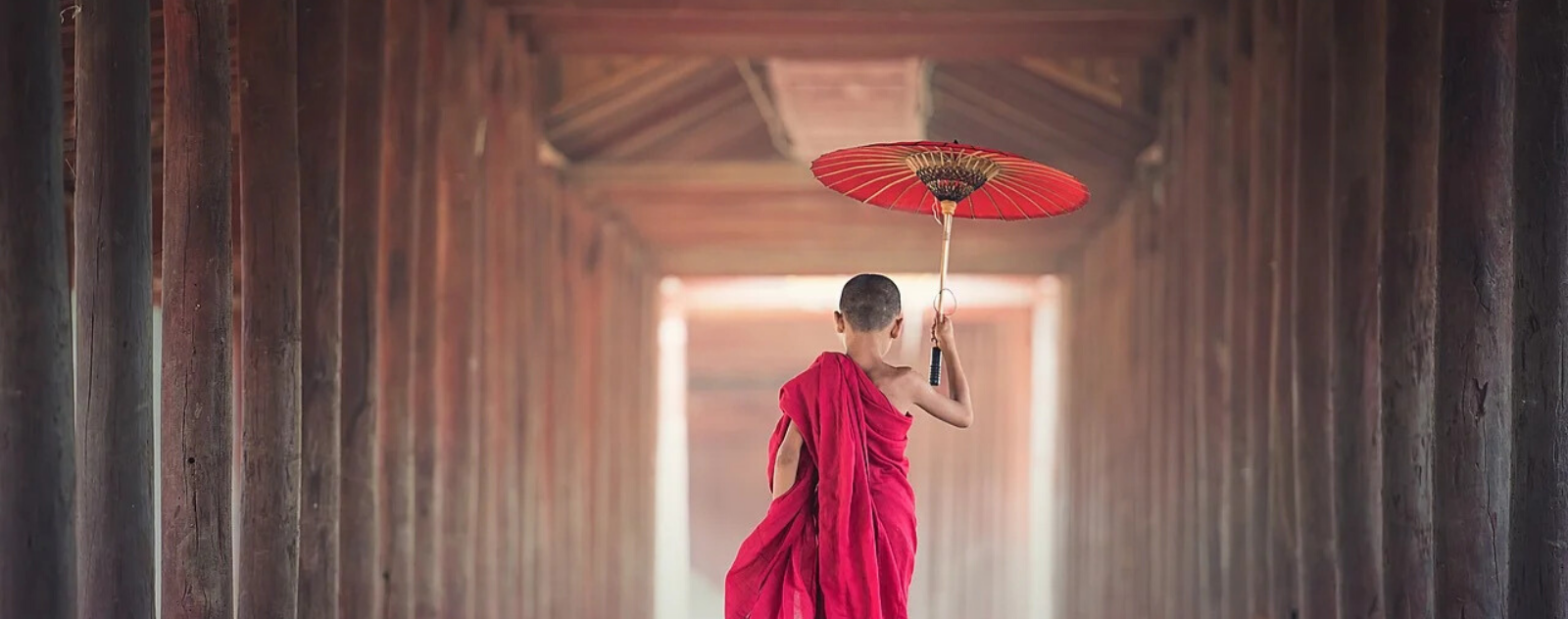Chatra, The parasol or umbrella (Skt. chattra; Tib. gdugs) is a traditional Indian symbol of protection and royalty.
The ability to protect oneself against the elements has always been a status symbol in all cultures.
Parasol Buddhism = protection
In Europe, until a few decades ago, a parasol was a status symbol for society ladies. In Eastern thought, the fact that it protected the wearer from the scorching heat of the sun was transferred to the religious sphere as "protection against the heat of impurities." Thus, the coolness of its shadow symbolizes protection from the heat of suffering, desire and other spiritually harmful forces.
The dome of the umbrella is held at the top by a vertical handle (just as the mountain holds up the sky), which is identified with the axis mundi, or the central axis that supports the world .
The umbrella is carried above an important dignitary or image of a deity, to indicate that the person or symbol under the umbrella is in fact the center of the universe, and also its spiritual support. Umbrellas seem to be particularly important in processional rites, being like mobile temples. Thus, depictions of the Buddha often show an elaborate, large umbrella above his head.
The chatra
 < br>
< br>
As it is held above the head, it naturally symbolizes honor and respect. In Vajrayana Buddhism, this great umbrella (atapatra) was even deified as the thousand-armed and footed goddess Sitapatra, whose name literally means "the white umbrella".
In Tibet, depending on their status, various dignitaries were entitled to different parasols, with religious leaders entitled to a silk parasol and secular leaders to one with embroidered peacock feathers. Exalted figures like the Dalai Lama are allowed both, and in processions, first a peacock parasol and then a silk parasol is carried after him.
The Tibetan version of the parasol was adopted in from its Indian and Chinese royal prototypes, and fashioned from a striped wooden frame with a domed silk cover and hanging silk pendants constituting a cantilevered skirt.
The dome symbolizes wisdom, and the hanging skirt, compassion. The composite shape of the parasol therefore signifies the union of these two elements.
Octagonal and square parasols are also common, representing the Noble Eightfold Path and the Four Directional Quarters respectively.
Other Sources: https://fr.wikipedia.org/wiki/Chatra
To know more Buddhist symbols, see the full article: BUDDHIST SYMBOLS AND THEIR MEANING
Video illustration of Buddhist parasol in full ceremony taken from the Youtube channel:










































